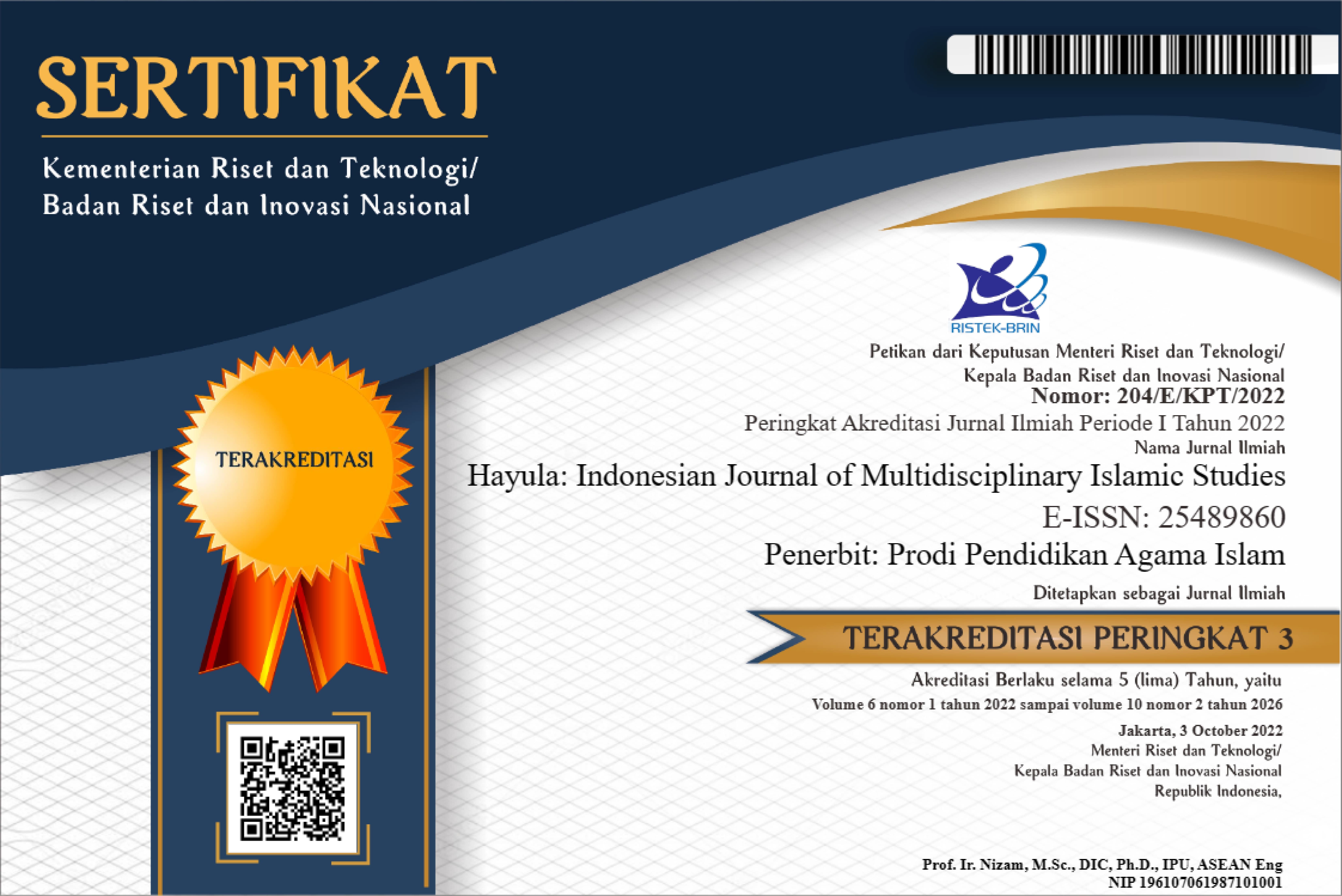The Development of Translation Capability for the Holy Quran of Student of Teacher Candidate for Islamic Religious Education: A Tamyiz Learning and Teaching Strategy
DOI:
https://doi.org/10.21009/003.1.01Keywords:
Alquran Translation, Religious Education Teacher, Learning Method for Alquran TranslationAbstract
It has become a Global Issue that the quality of education will never exceed the quality of teachers. Therefore, improving the quality of teachers should be the main priority of every party concerned about the quality of education, including religious education in schools. Therefore, improving the quality of Islamic Religious Education (IRE) teachers needs to be a priority for every educational institution that prints candidates for religious teachers, one of which is the study program of Islamic Education Science (IPAI) at Universitas Pendidikan Indonesia (UPI) as part of efforts to improve religious education in schools. One of the competencies that IRE teachers need to have is the ability to translate the Quran. Related to this matter, this paper specifically describes how the implementation of tamyîz method to improve the ability of the student to translate the Quran as prospective teachers of IRE at Schools. The tamyîz method is an innovative method of learning Arabic developed by Abaza, M.M. This paper used qualitative research with descriptive method
References
Barber, M., & Mourshed, M. (2007). How The Worlds Best Performing School Systems Come Out On Top. London: OECD.
Creswell, J. W. (2012). Educational Research : Planning, Conducting, and Evaluating Quantitative and Qualitative Research (4th ed.). Boston: Pearson Education, Inc.
Djamarah, S. B. (2010). Guru dan Anak Didik Dalam Interaksi Edukatif. Jakarta: Rineka Cipta.
Fraenkel, J. R., & Wallen, N. E. (2012). How to Design and Evaluate Research in Education (8th ed.). New York: Mc Graw Hill.
Hasan, M. I. (2002). Pokok - Pokok Metodologi Penelitian dan Aplikasinya. Jakarta: Penerbit Ghalia Indonesia.
Margono. (2004). Metodologi Penelitian Pendidikan. Jakarta: PT Rineka Cipta.
Mulyasa, E. (2009). Standar Kompetensi dan Sertifikasi Guru. Bandung: Remaja Rosdakarya.
Peraturan Pemerintah No. 74 Tahun 2008. (n.d.). Guru.
Sugiyono. (2012). Metode Penelitian Pendidikan: Pendekatan Kuantitatif, Kualitatif dan R & D. Bandung: Alfabeta.
TIM Dosen PAI UPI. (2016). Pendidikan Agama Islam. Bandung: Departemen Pendidikan Umum.
Undang-Undang No. 14 Tahun 2005. (n.d.). Guru dan Dosen.
Undang-Undang No. 20 Tahun 2003 . (n.d.). Sistem Pendidikan Nasional.
Downloads
Published
How to Cite
Issue
Section
License
Authors who publish with this Journal agree to the following terms:
- Author retain copyright and grant the journal right of first publication with the work simultaneously licensed under a creative commons attribution licensethat allow others to share the work within an acknowledgement of the work’s authorship and initial publication of this journal.
- Authors are able to enter into separate, additional contractual arrangementfor the non-exclusive distribution of the journal’s published version of the work (e.g. acknowledgement of its initial publication in this journal).
- Authors are permitted and encouraged to post their work online(e.g. in institutional repositories or on their websites) prior to and during the submission process, as it can lead to productive exchanges, as well as earlier and greater citation of published works.
Users/public use of this website will be licensed to CC BY






